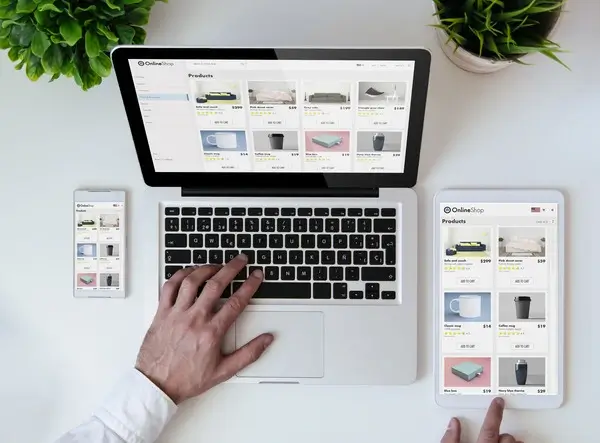Today’s world lives on the internet. Hence, it is no surprise that even our marketplaces have gone online. From items of daily need to significant purchases like cars and jewelry, we buy everything from the internet. In fact, NASDAQ has predicted that by 2040, 95% of all purchases will take place online, and e-commerce giants like Amazon or eBay are a living testament to how e-commerce platforms have forever changed our consumer habits.
If you are a business selling a product, it is simply inconceivable not to start an e-commerce business. Understanding key elements of e-commerce websites is crucial to building an efficient and effective online store. Let us tell you about the essential components to ensure your business thrives in the digital marketplace.
Where to Start
When starting out, it can be slightly difficult to figure out how to take your business online. Follow these simple steps to get started.
- Just like any other business, in order to set up your elements of e-commerce website, you first need to have a clear idea about what you are going to sell and the market for the product.
- Determine your business model. Do you want to operate on a B2B model and sell to other businesses or a B2C model where you directly sell to the end consumer?
- Pick out a business name that is catchy, succinct, original, and brief. Something that the customers can easily relate to or trust.
- Get your branding on point. Every business has a story and a voice. Find out yours and determine the best way to communicate the same.
- Finally, purchase a domain and register it instantly to avoid hassles in the future.
Choosing the Right Platform
There are several e-commerce platforms like Magneto, Shopify, or WooCommerce to choose from. Make sure you choose the one that caters to your business and objectives. Here is a checklist of elements you need to ensure while choosing your e-commerce platform.
- Reponsive Design– A responsive design ensures a consistent user experience irrespective of whether you are accessing the site on a desktop, a tab, or a mobile. The mobile view is especially crucial as most people use their phones for online shopping.
- Proper Product Description– People cannot buy what they cannot understand. Make sure your products are clearly described and adequately highlighted to make it coherent for the customers.
- Ease of Navigation – From handy search options to distinct categories, make sure your products are easy to discover for the customer.
- Speed Optimization– No matter how great your product is, no one wants to buy from a website that takes ages to load. The speed of the website needs to be optimized for a smoother and more enjoyable experience.
- Shopping Cart & Check Out Option – Not everyone who comes to the website would be willing to log in every single time. Having a checkout option removes this barrier to create better conversion rates. And while you are at it, it is also a good idea to include a shopping cart for a seamless shopping experience.
- Payment Processing – It is a smart decision to have multiple payment options such as credit/debit cards, net banking, Apple Pay, PayPal, Google Pay, and other common payment gateways.
- Site Security – Since your e-commerce site would be handling sensitive information like bank details, addresses, and mobile numbers, site security is of paramount importance. Ideally, it should be built with a secure socket layer that is able to encrypt the information on the site.
Following the mentioned steps and making sure that you tick off all the points in the discussed checklist will let you take your business online without any hassles.
FAQ
1. What are the essential elements of an e-commerce website?
Key elements include intuitive navigation, high-quality images, detailed product descriptions, secure checkout, and responsive design. Additional features like customer reviews, a search bar, and strong calls-to-action improve user experience and boost conversions.
2. Which e-commerce website features drive more sales?
Product recommendations, streamlined checkout, mobile optimization, and abandoned cart recovery help increase sales. Live chat support, multiple payment options, and personalized experiences also enhance user engagement and reduce cart abandonment.
3. What factors are important in e-commerce website design?
Important design factors include fast loading times, mobile responsiveness, simple navigation, and clear CTAs. Consistent branding, easy access to products, and a smooth checkout process guide users effectively through the site.
4. How to start an e-commerce business on a budget?
Start by choosing a cost-effective e-commerce platform like Shopify or WooCommerce. Focus on a niche, use dropshipping to avoid inventory costs, and leverage free marketing tools like SEO and social media to drive traffic.
5. What is the best e-commerce platform for beginners?
Shopify is ideal for beginners due to its ease of use, while WooCommerce offers flexibility for WordPress users. BigCommerce is great for scaling businesses, providing advanced features and customization options.
